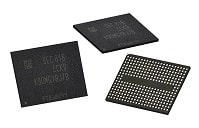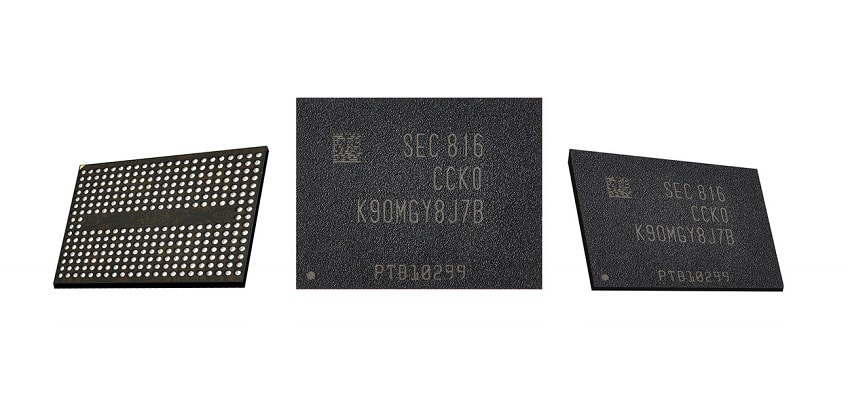
Samsung has begun mass producing its fifth-generation of 90-layer 256Gb 3D TLC NAND V-NAND memory as the industry's first company to use the Toggle DDR 4.0 interface. The company went on to say that, due to this new interface, the data transmitting speed between storage and memory via their new V-NAND hit a whopping 1.4Gbps, which is a 40% improvement over Samsung's 64-layer predecessor. Additionally, because of improvements to V-NAND's atomic layer deposition process, Samsung was able to increase manufacturing productivity by roughly 30% and reduce the height of each cell layer by 20%.

Even with this significant boost in performance, Samsung claims that the new V-NAND is still comparable to the 64-layer in power efficiency, as the operating voltage has been reduced from 1.8 volts to 1.2 volts. Moreover, Samsung adds that their next-gen V-NAND has the industry's fastest data write speed at 500μs (a 30% improvement over the previous generation). They were also able to reduce read-signal response times to 50μs.
Inside Samsung’s new 5th-gen V-NAND are over 90 layers of 3D charge trap flash (CTF) cells stacked tightly in a pyramid structure with microscopic channel holes (a few hundred nonmeters wide) vertically drilled throughout. These channel holes also contain more than 85 billion CTF cells, which can store three bits of data each.
Expect Samsung to begin increasing production of its 5th gen V-NAND very soon, as it plans to cater to a range of different market needs, including supercomputing, enterprise servers and the latest mobile applications.
Sign up for the StorageReview newsletter
